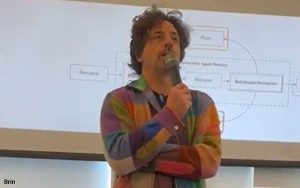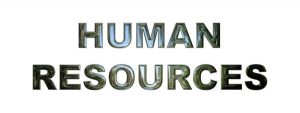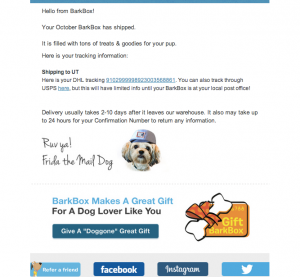You’re not taught in school that being a freelancer is even an option to consider. As a result, it’s a less clearly defined career trajectory. A common misconception with freelance is that it’s primarily a stopgap for professionals to leverage in between full-time roles or a side hustle you spend time on outside of work. But now more than ever full-time self-employment is also a viable option as a long-term career path.
In fact, 64% of the estimated 6.7 million freelancers working in the U.S. today are full-timers focused solely on self-employment and not employed elsewhere. Many decide to stick with full-time freelancing for the long haul given the unique benefits of this employment arrangement and its alignment to their professional preferences.
That said, there’s no prescribed path to follow compared to how familiar we are with career options as employees.
This past June, I hit my 10th year of self-employment as a marketing consultant, and along the way I’ve discovered what it takes to maintain the momentum, grow my business, adapt to changing circumstances, and minimize the downsides like burnout, loneliness, and bad clients.
Here are key lessons from my career on what it takes to freelance for the long run, as well as advice from other self-employed professionals who have built lasting practices on their terms.
Define your niche
To find the sweet spot between the unique expertise you offer and the in-demand industry skills companies are looking for, define your niche as a freelancer. Whether you’re focused on a highly specialized offering, serving a particular type of client or industry, or offering a complementary mix of services, choose a niche that reflects your strengths, is easy to quickly understand, and that’s providing sought-after support.
For example, I partner with tech companies, media brands, and nonprofits to consult, teach, and train on developing social media and content marketing strategies that drive results. This breakdown of my niche succinctly highlights the types of clients I support and the specific services I offer to help them address a distinct marketing-related challenge.
Customers are looking for contractors with specialized skill sets to assist them in completing important tasks, so they’re more likely to discover you with a niche focus to your offerings. Plus, concentrating on a few areas of expertise can help you further hone your craft and better articulate your speciality with confidence, helping you foster trust with potential clients.
Share your ideas publicly
Another way to build trust with customers is to show instead of tell, by consistently sharing your opinions, experiences, or recommendations related to your focus in a public forum.
Whether through social media, blogging, podcasting, or otherwise, publishing content on topics linked to your expertise can help clients discover you and learn directly from your expertise.
Regularly publishing my ideas on marketing across LinkedIn, industry publications, and as a guest on podcasts has helped me continually stay top of mind with clients and attract new ones.
By providing value free of charge through sharing your knowledge, you ideally won’t need to stress your credentials to prospects because they’ll be able assess your expertise on their own.
Focus on your network
As a freelancer, your network is vital. The way you expand, nurture, and engage with your network, that is the closest thing that replicates the value of being in a company as an employee, says Lola Bakare, an inclusive marketing strategist and a CMO adviser who’s been self-employed for more than eight years.
If you’re able to show up for the people in your network consistently and intentionally, you’ll build a reciprocal support system of like-minded people who will happily refer clients to you, support your projects, champion your successes, and offer guidance when you’re struggling.
“Be very willing to not just ask for help, but surround yourself in help,” Bakare says.
Diversify your income
Establishing more than one source of income is how you build longevity with self-employment, especially avoiding the feast-and-famine cycle often associated with freelancing. This happens by purposefully developing different service offerings, working with a range of clients, or operating in multiple industries for greater career security.
To date, I’ve primarily developed four sources of income all related to my focus in marketing: career coaching, teaching courses, consulting projects, and leading training engagements.
This mix of offerings really keeps me engaged and excited about the work I’m doing, allows me to provide value to customers in a variety of formats, and protects me monetarily. When there are shifts in the marketplace that are out of my control and demand for one aspect of my offerings is reduced, the other income sources usually remain consistent to help fill the gap.
Build your credibility
“Early in your career, it’s essential to ensure you’re being taken seriously,” says Dorie Clark, a strategy consultant, keynote speaker, and the author of The Long Game, who’s been self-employed for 17 years. “The best way to do this is to gather as much ‘social proof’—easily understood and verifiable symbols of your competence—as quickly as possible.”
That can include guest lecturing at universities, working with well-known clients, being quoted in or writing for prominent publications, or having testimonials from important people in the field, Clark says. This kind of social proof can boost your credibility, increasing the chances you’ll land more of the opportunities you’re after.
“Some people throw up their hands if they don’t already have these laurels, but a far better plan is to strategize around how to get them,” Clark says. For instance, early in her career, she sent emails to dozens of universities pitching herself as a guest lecturer. Today she teaches at Duke University’s Fuqua School of Business “without an MBA or PhD,” she says, “and it started from that original push to gather social proof.”
Be reliable
An all-too-often overlooked aspect of being an effective independent contractor with staying power who gets hired again and again is being a reliable partner to your clients.
“Be consistent, reliable, and communicative,” says Melissa Doman, an organizational psychologist, former clinical mental health therapist, and author who’s been self-employed for four years. “There are countless people who drop the ball, have excuses for why they didn’t complete something, and don’t communicate about it. Clients need to be able to trust you.”
In other words, be easy to work with. While the services you deliver need to fulfill your client’s needs, the experience you provide is what makes a lasting impression that will determine whether they’ll hire you again or recommend you to someone else.
This doesn’t mean you always have to perform perfectly. “It means that you need to show that you value the relationship and have appreciation and respect for clients who’ve hired you,” Doman says. “That means doing what you’ve committed to doing, when you’ve committed to do it, and ensuring open communication around that process.”
Grow your skills
Once a year I invest in trying something completely new in my business or an in-depth learning opportunity to grow my skills in a particular area of my practice.
This year I completed a program to earn a certification as an executive coach from the Berkeley Executive Coaching Institute to expand my offerings as a career coach for marketers.
The goal of committing to one yearly growth opportunity is to guarantee I’m scheduling the time to actively expand my skills and experiences in a considerable way beyond passive learning.
As a result, I remain a valuable asset to clients, adjust to emerging technologies and market fluctuations, discover new professional interests, and ensure my work remains engaging.
Freelancing requires you to take the initiative to increase your skills to maintain your relevance and stay at the forefront of your field, so prioritize this by scheduling the time on your calendar.
Learn from mistakes
Recognize that you’re going to make lots of mistakes along the way as a freelancer, but as long as you learn from them, they’ll benefit you in the long run.
That’s a key lesson Nicte Cuevas, a bilingual brand strategist and graphic designer, has learned over 12-plus years of self-employment.
“We will all make mistakes, and in my early years, I made a costly error when I relied on a verbal agreement with a friend,” Cuevas says. “That experience taught me the indispensable value of contracts. They are my silent partners, ensuring that every transaction is transparent.
Now Cuevas is careful to get all details in writing. “By clearly defining what our services include—and do not include—we eliminate confusion and potential disputes. It’s a preventive measure that has saved me from challenging clients,” she says.
Prioritize what brings you joy
Self-employment is not for everyone. But when you’re clear on the pros and cons of freelancing you can work mindfully to tap into the benefits of this work arrangement and minimize the downsides.
One major benefit of freelance is having more flexibility and control over the clients you collaborate with, the projects you take on, and the schedule you follow. This is often the aspect of self-employment that brings many freelancers the most joy.
And finding which part ignites and maintains the joy of freelancing is what can help sustain your interest in this career path for the long haul.
For me, some of the most enjoyable moments of freelancing have been building out a range of service offerings and income sources. Each task requires me to leverage different skills, I’m working toward challenging goals that I’ve set for myself, and there’s a sufficient amount of variety in every workday.
Don’t be afraid to say no
Experiencing moments of overwhelm happens across every career path, but it’s particularly common when freelancing if you’re not intentional about how you’re structuring your practice.
According to Josh Garofalo, a SaaS copywriter and consultant who’s been freelancing for more than eight years, you need to put yourself in a position to say no.
“Many freelancers burn out by working for difficult clients at low rates and then quit. They do this because they need the work—any work,” he says. “If you can help it, don’t go full time until you have enough savings to confidently turn work down. Even better, don’t go full time until your business is threatening to interfere with your job.”
Prospects will feel your confidence on sales calls, and you’ll be able to close more easily at higher rates because of it, he says.
Embracing these lessons early on can help you better navigate self-employment for the long term and define what a sustainable career as a freelancer looks like for you.
Brian Honigman is a marketing consultant, adjunct professor, and LinkedIn Learning instructor.
(10)










